The girl who went to buy cornflakes and never came home
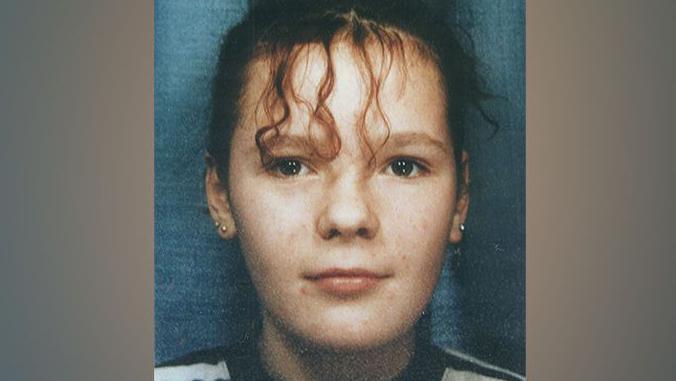
Lindsay Rimer liked Nirvana, the Prodigy and had dreams of one day studying at university
- Published
On a rainy November night in 1994, Lindsay Rimer walked the short route from her home to a local shop to buy breakfast cereal. The 13-year-old's body was discovered weighed down in a nearby canal months later. In her pocket, the exact change from the cornflakes she had bought. Her killer has never been caught.
Senior detectives are not usually immediately alerted to a missing teenager.
On the day the alarm was raised Tony Whittle was chatting with colleague Graham Sunderland.
The conversation turned to the cases they were working on, with Graham saying the force received a call that morning about a young girl who had not turned up for her daily paper round.
Her parents were frantic because it appeared she had not been home all night.
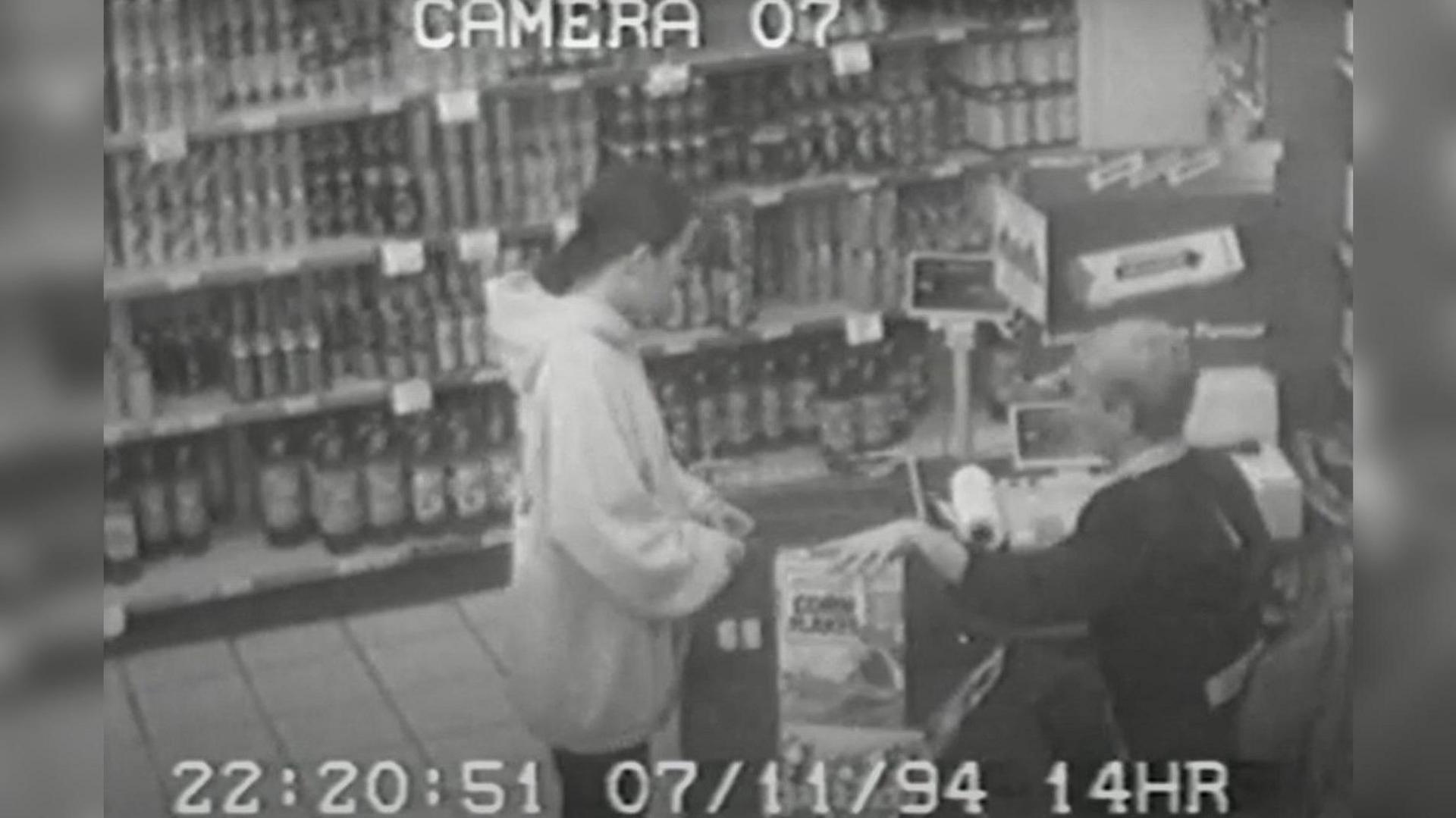
CCTV images show Lindsay buying cornflakes shortly before she disappeared
Whether it was professional judgement or gut feeling, the men agreed there was something they could not put their finger on that left them concerned.
Then a detective superintendent in the murder squad, Tony was based in Bradford where it was not too unusual for teenagers to disappear overnight before re-emerging the next day.
But this was Hebden Bridge.
Eight miles (12km) outside of Halifax in West Yorkshire, a hippie-spirited town surrounded by rolling hills and stone bridges. The definition of a community where everyone knows everyone.
Although no-one in Lindsay Rimer's family knew it yet, their lives had changed forever.
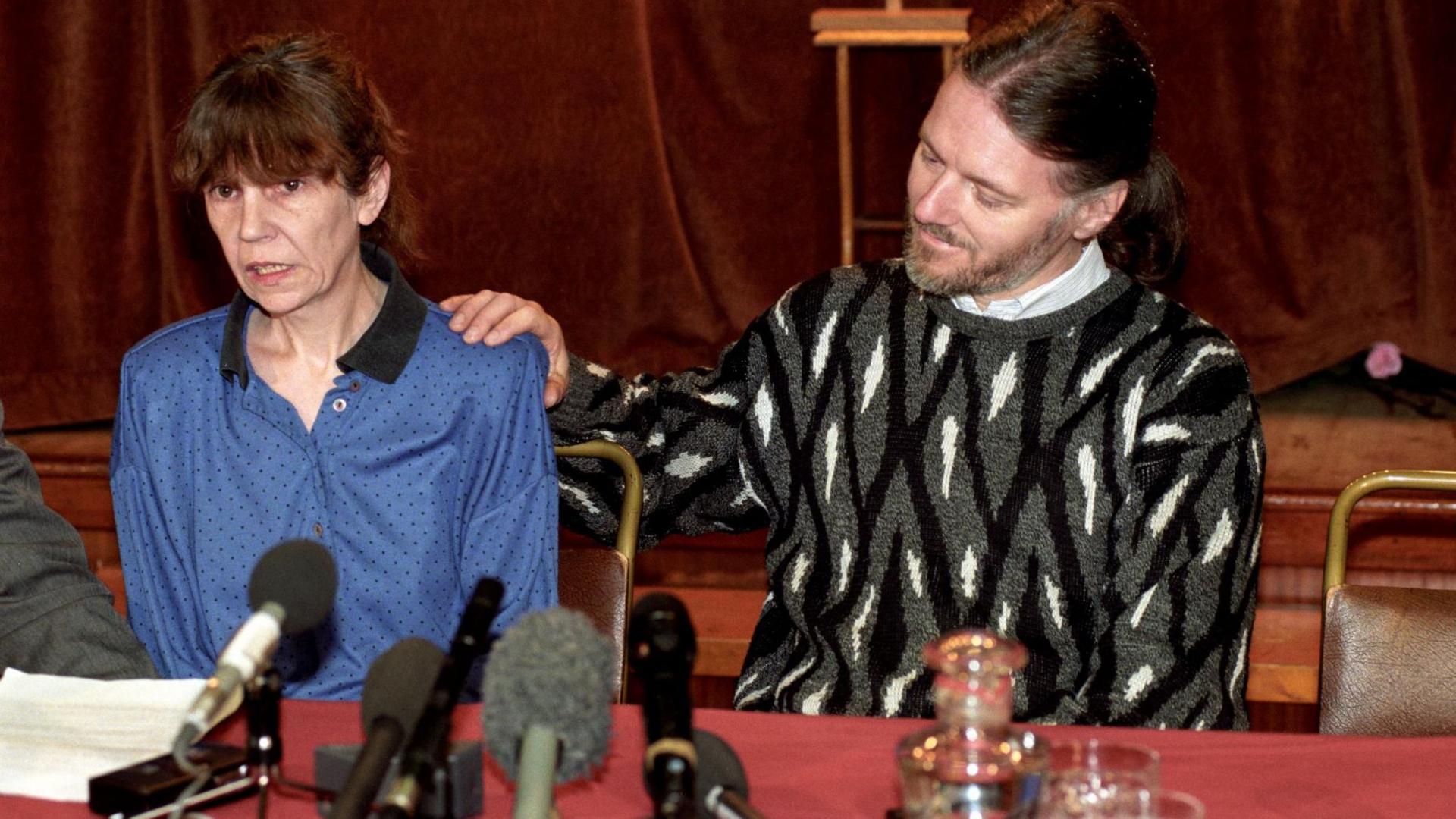
Geri and Gordon Rimer make an appeal to the public for help in finding their missing daughter
"We were just a normal family before that night. Then it all exploded," recalls Kate, Lindsay’s elder sister who was 20 when she disappeared.
One of three girls, Kate was a new mum and living near the family home on Cambridge Street. Lindsay would often come for a sleepover.
Having realised there were no cornflakes for breakfast the next day, at 22:00 GMT on 7 November Lindsay had walked less than a mile to the Spar on Crown Street.
When she left the house, her dad was on the phone so Lindsay called at the nearby Trades Club where her mum was meeting friends and got some money from her so she could buy the cereal.
After her mum returned later, Lindsay's parents went to bed assuming their daughter had come home and gone straight up to her attic room.
But the next morning they were called by the newsagents where Lindsay worked to say she had not turned up.
"Mum and dad realised her paper delivery bag was still in the kitchen along with her school money. They ran upstairs and realised she hadn't slept in her bed.
“They knew straight away something had happened," Kate says.
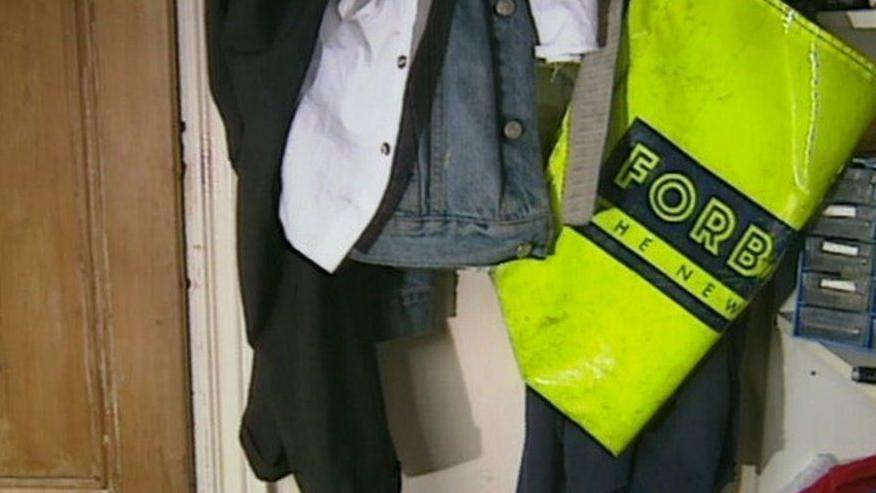
Lindsay did not turn up for her paper round at Forbuoys Newsagents, her brightly coloured bag hung up with the coats at home

Graham (left) and Tony were at the forefront of police efforts to solve the case. In this media appeal Lindsay's dad Gordon (right) speaks to the press
Grainy CCTV footage from the shop captured Lindsay leaving at 22:22 GMT.
She was spotted moments later by two bus passengers as she leant against a wall near to the town’s Memorial Garden.
That was the last confirmed sighting of her alive.
In the early days of her disappearance, police and the community joined forces and combed the area, hoping to bring the teenager home.
Three close friends of Geri and Gordon moved in with the family.
Together, they would spend nights brainstorming, writing down potential leads or information on a flip chart - anything that could help find Lindsay.
A week into the search and Kate, who describes being "plucked from normality into a world of crime and press," played the role of her sister in a televised reconstruction.
It was hoped tracing her last movements would jog people's memories.
Kate remembers: "I was insistent I wanted to take part. She was my build and we looked similar. I felt it was the least I could do to try and find her."
"I look back at photos of myself at the time and the reconstruction and I look so young. I don't recognise myself but I recognise the terror in my face," she adds.
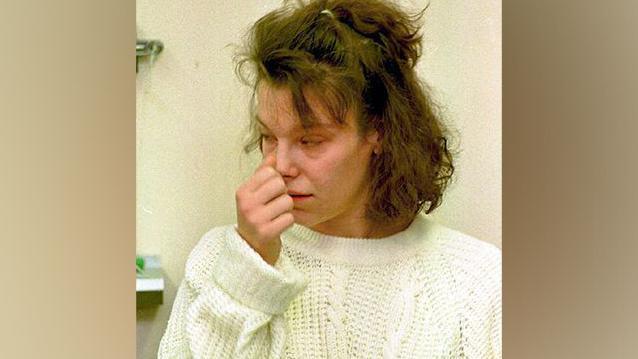
Kate Rimer, pictured in 1994, was determined to take part in the reconstruction of her sister's last known movements
As the investigation wore on Kate says she remembers when officers, growing increasingly desperate for a breakthrough, searched the home of every man in the town.
There were rumours of sightings in other parts of the country. One man told police he had seen Lindsay being dragged into a car and had followed it to a nearby reservoir but his claims were disproved.
Tony reflects: "All we had was this CCTV picture of her in her big baggy jumper and jeans and that was it."
"There were people around at the time and had she been dragged into a vehicle kicking and screaming, someone would have seen or heard."
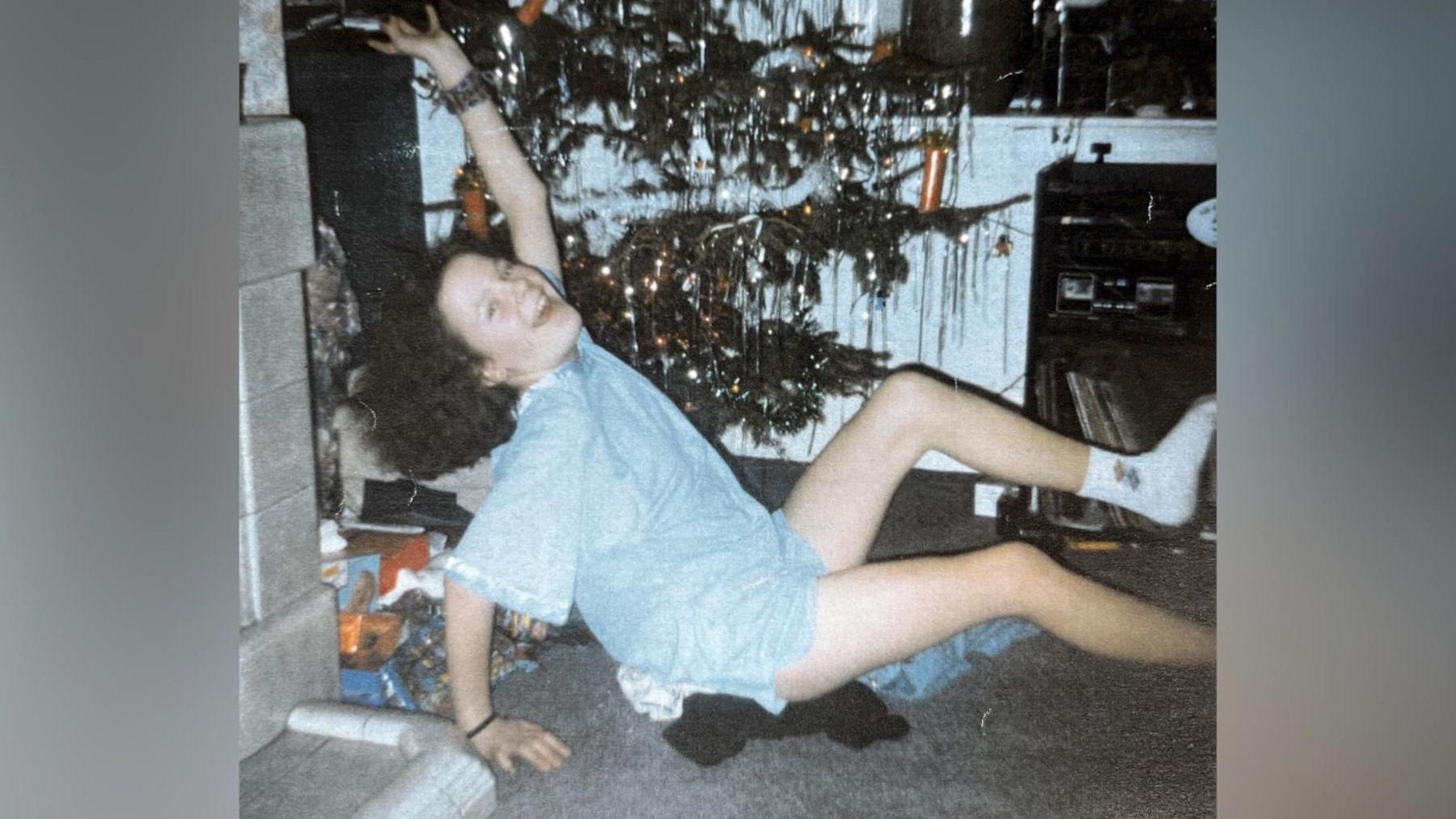
Detectives believe Lindsay may have been killed by someone she knew
The lack of sightings led detectives to believe Lindsay had got into a vehicle with someone she knew.
She was described as an "intelligent, cautious girl" who would not have gone off with a stranger.
The investigation gained national attention, generating a sense of fear about how a schoolgirl could vanish in a place like Hebden Bridge.
An offender profile drawn up by a psychiatrist suggested the likely suspect would be someone who could drive, probably aged 17 to early 20s, and perhaps someone Lindsay would be attracted to.
Could it be someone she had met recently or maybe an older brother of someone she knew?

There were hopes of a breakthrough after identifying the driver of a stolen Honda Civic
Several weeks into the inquiry and there was hope of a breakthrough.
Exhausted detective Tony had been persuaded to take his first day off in weeks when he received a call to say officers had tracked down the driver of a stolen red Honda Civic.
The vehicle had been spotted around the town when Lindsay disappeared. It was thought the driver had attempted to talk to schoolgirls.
Tony remembers: "I thought, 'right, that's our guy, let's get him in'."
However, it turned out the man had an alibi and was ruled out.
"He was actually being spoken to by a police officer miles away at about the time Lindsay would have left the shop," he adds.
As the months wore on, and with the absence of any concrete leads, the inquiry was beginning to wind down.
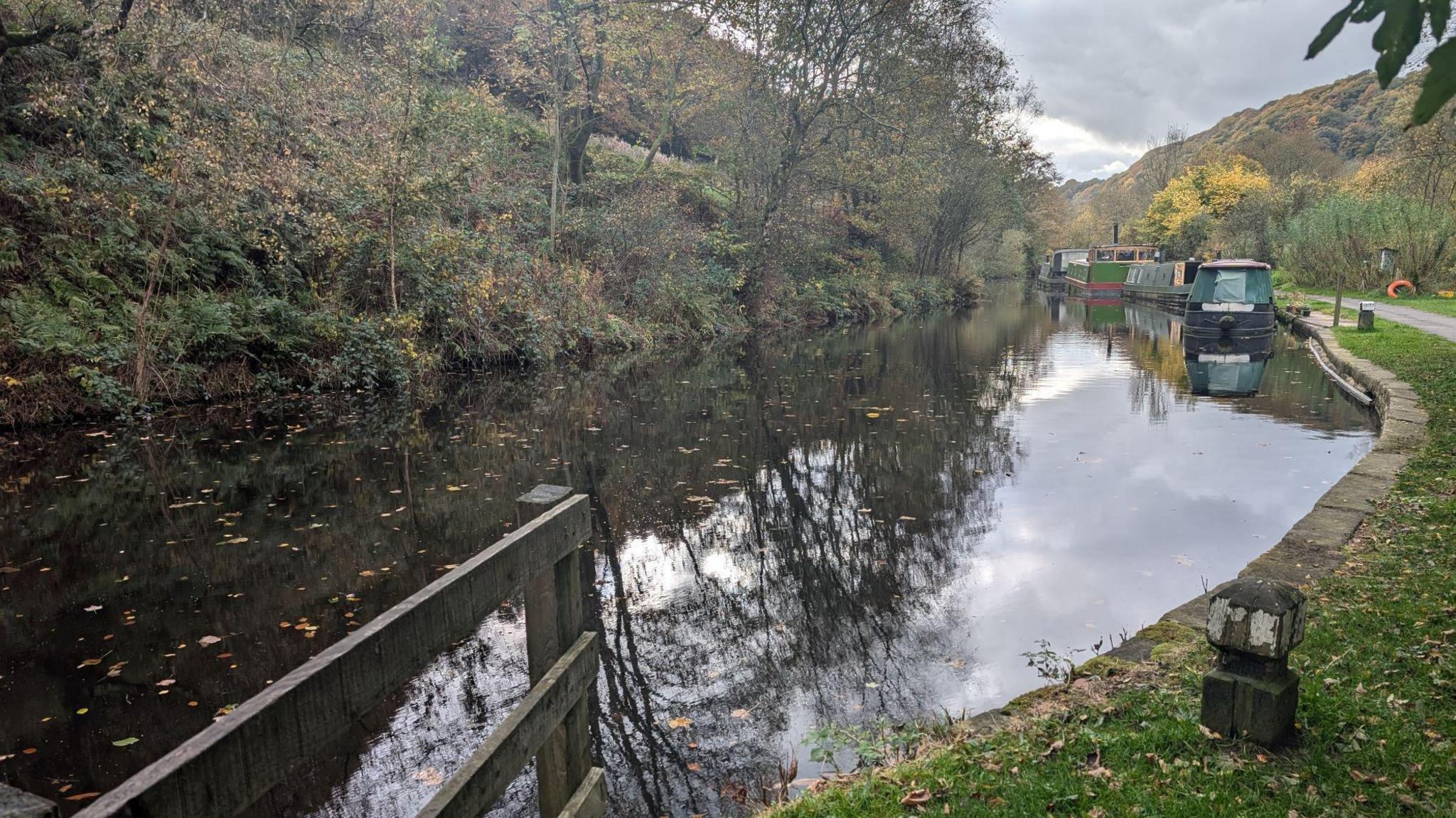
The schoolgirl's body was found at Rawden Mill Lock
Then in April 1995, Lindsay's body was found a mile out of the town centre in the Rochdale Canal by two council workers clearing debris from the waterway.
Kate says: "I remember it clearly. I was sat in the park watching my daughter play.
“My dad walked down and sat next to me. He said they'd found a body and we needed to go back to the house.
"It wasn't a shock because after so long we weren't expecting her to come home. But it was just deeply sad."
Lindsay had been strangled - likely killed on the night she vanished and her body dumped.
The arms of her jumper had been tied together in a sling with a stone used to weigh her down. There was no suggestion of a sexual assault.
Being submerged in the water for so long had erased any chance of forensic clues that might help police.
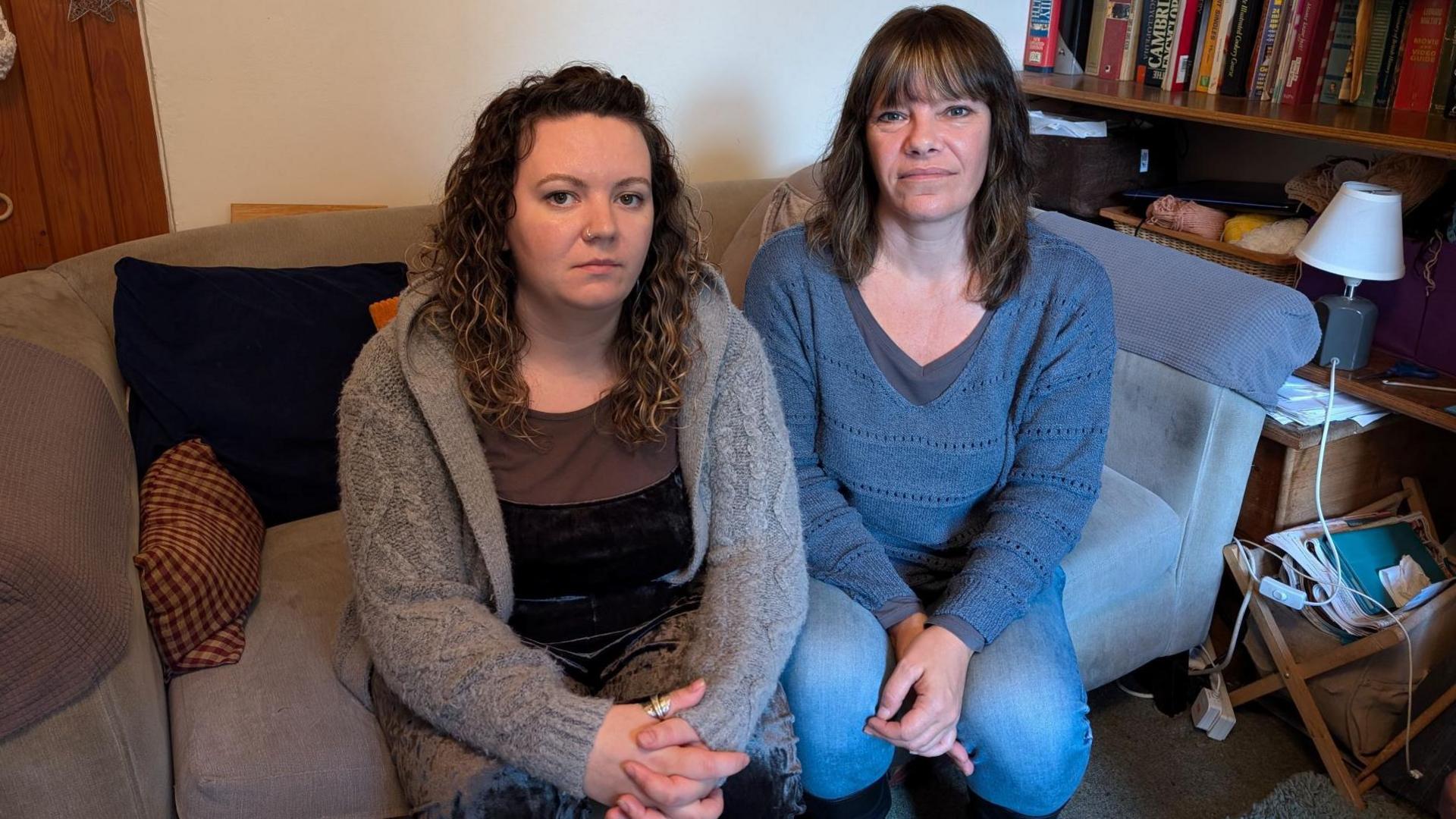
Juliet (left) and Kate Rimer say their family has been left "broken" by the murder of their sister
Hundreds of witness statements were taken. Officers spoke to thousands of people, examined hundreds of vehicles and made repeated appeals, but no progress was made.
Over the years the case has remained open and there have been moments where a breakthrough appeared within touching distance.
In April 2016, police believed that scientific advances had enabled them to create a DNA profile which may lead them back to the killer.
A 63-year-old man was arrested in November of that year with a 68-year-old from Bradford arrested in April 2017.
Both were later released without charge.
Three decades on, Lindsay's younger sister Juliet reflects on how she has no living memory of her sibling.
A baby when she disappeared, Juliet has grown up knowing Lindsay to exist only in the context of murder and death.
She talks about a childhood where her family were in a "perpetual cycle of grief".
"I don't think there was one particular instance where I found out I had a sister that was killed.
"You can't have a conversation with your young child about murder so it was something I pieced together over the years."
The shadow of Lindsay's murder still looms across Hebden Bridge and weighs heavily on the minds of both former and current officers.
Graham, who was a detective inspector on the investigation, says he thinks about the case often and it was the only one in his career that officers hadn't solved.
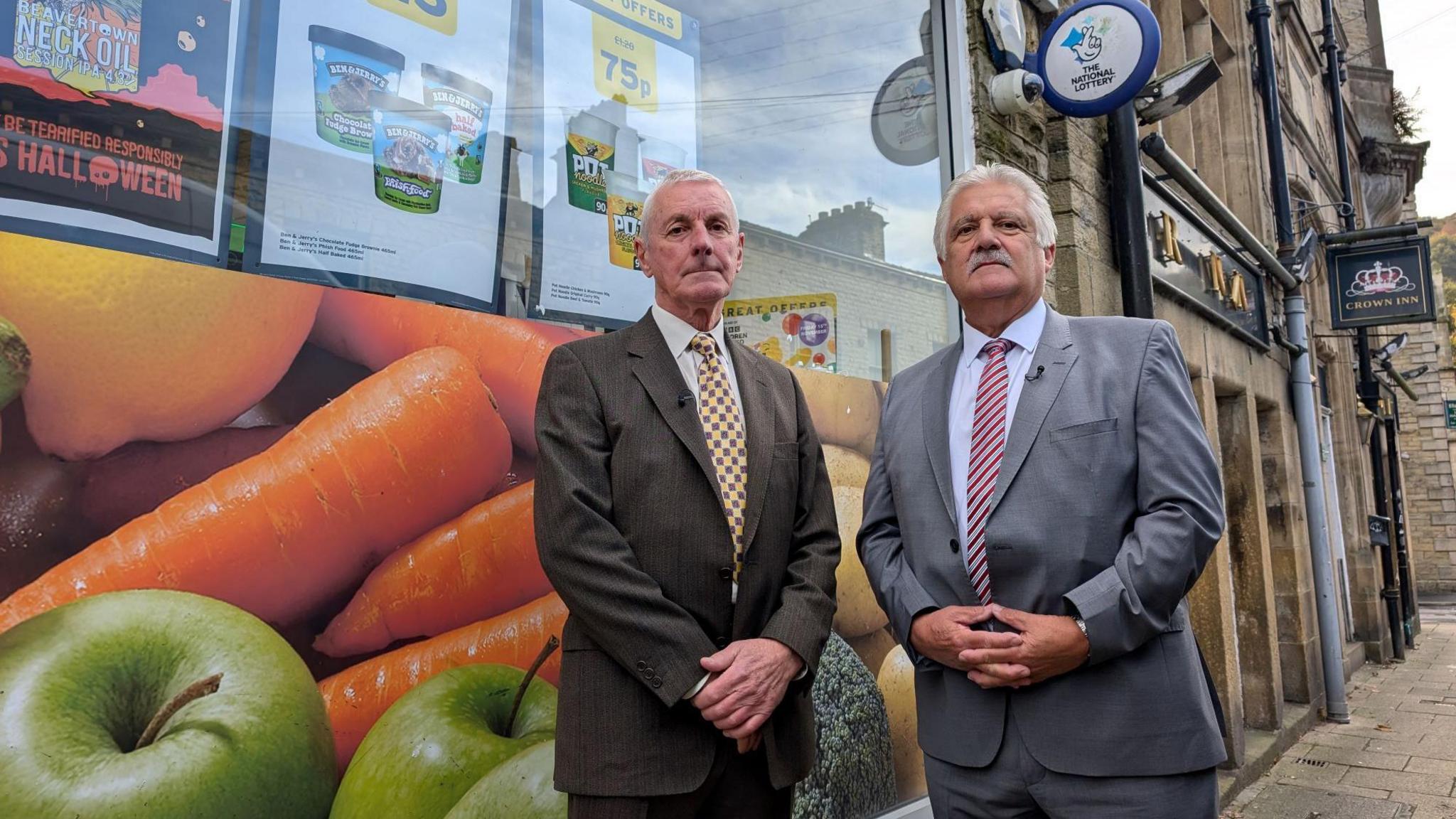
The original case detectives, Tony Whittle and Graham Sunderland, who are now retired, say they still believe Lindsay's killer can be found
Although now retired, he is desperate for the case to be solved: "We need to know what happened to Lindsay. No matter how insignificant, if someone knows something, for heaven's sake come forward."
"It's a little girl I've never met and yet I know really well," he adds.
The detective now heading up the inquiry says police are still committed to finding the killer and getting justice for the Rimers.
Det Ch Insp James Entwistle says: "Loyalties change around people who know things, science moves on. There is always an opportunity and always a drive because this is a relentless pursuit for the truth."
The wounds of not knowing remain unhealed for Lindsay’s family.
Kate describes her parents as "broken" with the whole family "exhausted by grief".
They have created a memory box of their sister. They talk about a young teenager who had a love of fashion, was into Nirvana and the Prodigy and was keen to go to university.
But for self-preservation Kate and Juliet can't focus too much on what Lindsay's life may have been like.
"For our own wellbeing, we cannot go there.
“It's too painful to think about what she would be doing and what she's missed out on."
The family’s only way of finding peace is to find the killer.
Kate says: "If you've experienced a death in the family you're allowed to move on from it.
“You can forge a life where you encompass grief, but it doesn't overwhelm it.
"But we're stuck in this overwhelm all the time because we don't have closure.
“We can only move on when we know who is responsible for killing our sister."
Anyone affected by the issues raised in this piece can access help and support via the BBC Action Line.
Listen to highlights from West Yorkshire on BBC Sounds, catch up with the latest episode of Look North or tell us a story you think we should be covering here, external.
Related topics
- Published3 November 2016
- Published7 November 2014
- Published7 November 2014